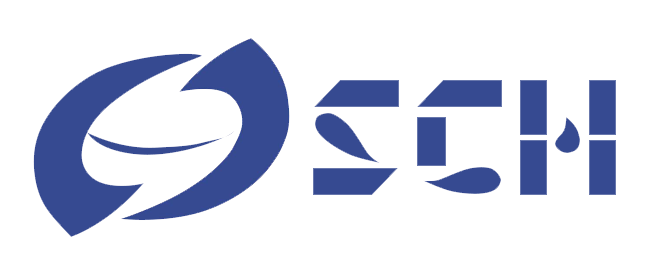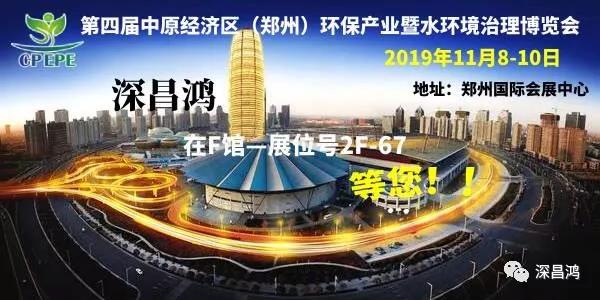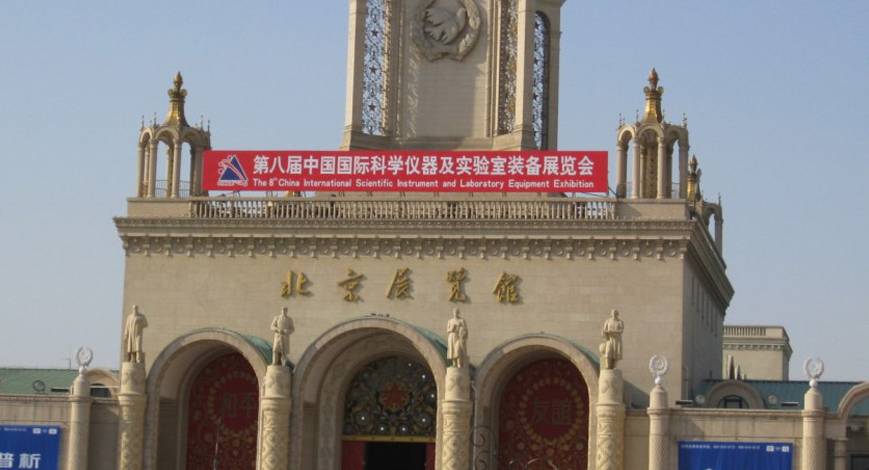In order to implement the environmental protection law of the people's Republic of China, the law of the people's Republic of China on the prevention and control of water pollution and the law of the people's Republic of China on the protection of the marine environment, protect the ecological environment, protect human health and standardize the technical requirements for sewage monitoring, the Ministry of biological environment approved and issued the technical specifications for Sewage Monitoring (HJ) on December 24, 2019 91.1-2019), from March 24, 2020.
This standard specifies the technical requirements for the development of monitoring scheme, sampling points, monitoring sampling, sample storage, transportation and handover, monitoring items and analysis methods, monitoring data processing, quality assurance and quality control of sewage manual monitoring.
This standard is a revision of the technical specifications for Sewage Monitoring in the technical specifications for surface water and sewage monitoring (HJ / T 91-2002). This standard was first issued in 2002. The original standard was drafted by China Environmental Monitoring Center. This is the first revision, the main contents of which are as follows:
——The content of monitoring program is added;
——Appendix A is added to provide the requirements for sampling and water sample preservation of common sewage monitoring projects;
——The contents of environmental protection acceptance monitoring, emergency monitoring, data integration and so on are deleted;
——The relevant expressions of sewage content in the scope of application, terms and definitions have been modified;
——The relevant contents such as sampling points, monitoring sampling, analysis methods, monitoring data processing, quality assurance and quality control are improved.
Since the implementation of this standard, the part of the national environmental protection standard technical code for surface water and sewage monitoring (HJ / T 91-2002) concerning sewage monitoring shall be abolished.
Development of monitoring plan
The main contents of the monitoring plan include but are not limited to: monitoring purpose, monitoring points, monitoring items, monitoring methods, sampling frequency, sampling equipment, on-site testing instruments, sample preservation, transportation and handover, sampling safety, monitoring quality assurance and quality control measures, etc.
Requirements for discharge outlet setting
1. The discharge outlet shall meet the requirements of on-site sampling and flow measurement. In principle, it shall be set within the plant boundary or within the range of no more than 10m outside the plant boundary.
2. The monitoring section of sewage discharge pipeline or channel shall be rectangular, circular, trapezoid and other regular shapes. The flow in the flow measuring section shall be straight, stable and have a certain water level height. If a concealed pipe or channel is used for sewage discharge, an open channel that can meet the sampling conditions and flow measurement shall be provided.
3 for the discharge outlet with the sewage surface more than 1 m below the ground, a sampling step or ladder shall be built. The area of the monitoring platform shall not be less than 1m2, and the platform shall be provided with guard rails not less than 1.2m.
4. The discharge outlet shall be set with obvious signs in accordance with the requirements of gb15562.1, and the daily management and maintenance shall be strengthened to ensure the safety of the monitoring personnel. The work of clearing and unblocking the discharge outlet shall be carried out frequently; the ventilation and lighting of the sewage monitoring point shall be ensured to be normal; the monitoring place that produces toxic and harmful gases shall be forced to set with ventilation system, and the corresponding gas concentration safety alarm device shall be installed.
5. The discharge outlet confirmed by the competent department of ecological environment shall not be changed at will. If the discharge port needs to be changed due to production process or other reasons, it shall be reconfirmed according to the requirements of 1-4.
Monitoring point setting
1 pollutant emission monitoring point
Set monitoring points at the monitoring positions specified in pollutant discharge (control) standards. For water pollutants that are difficult to degrade in the environment or can be accumulated in animals and plants, have long-term adverse effects on human health and ecological environment, have carcinogenesis, teratogenesis and mutation, which should be monitored at the discharge outlet of workshop or production facilities according to the requirements of environmental management, and the discharge of workshop or workshop pretreatment facilities before the sewage containing such water pollutants is mixed with other sewage Monitoring points shall be set at the water outlet. If centralized pretreatment is carried out for the same kind of sewage containing such water pollutants, the discharge outlet of workshop pretreatment facilities refers to the water outlet of centralized pretreatment facilities. If required by environmental management, monitoring points can also be set at the total discharge outlet of the pollutant discharge unit.
For other water pollutants, the monitoring point is located at the total discharge outlet of the pollutant discharge unit. If required by environmental management, monitoring points can also be set at the discharge outlet of the centralized sewage treatment facility.
2. Monitoring points for treatment efficiency of sewage treatment facilities
When monitoring the overall treatment efficiency of sewage treatment facilities, set monitoring points at the water inlet of sewage treatment facilities and the water outlet of sewage treatment facilities; when monitoring the treatment efficiency of sewage treatment units, set monitoring points at the water inlet of sewage treatment units and the water outlet of sewage treatment units.
3 rainwater discharge monitoring point
The sewage discharging unit shall separate rainwater and sewage, and the rainwater shall be discharged by rainwater pipeline after collection, and the monitoring point shall be set at the rainwater discharge outlet; if the environmental management requires that the rainwater shall be discharged after treatment, the monitoring point shall be set as 1.
Monitoring preparation
1 Preparation of sampling equipment and field test equipment
1.1 sampling equipment mainly includes sampling equipment and sample containers. Appropriate sampling equipment shall be prepared in accordance with the requirements of the analysis methods used in the monitoring project. If the requirements are not clear, it can be implemented in accordance with Appendix A.
1.2 the material of the sampling equipment shall have good chemical stability, and will not react with the water sample during the period of sample collection and storage, so as to cause the change of the component concentration of the water sample. The sampling equipment can be made of polyethylene, stainless steel, polytetrafluoroethylene and other materials, and the sample container can be made of hard glass, polyethylene and other materials.
1.3 the inner wall surface of sampling instrument shall be smooth and easy to clean and handle. The sampling apparatus shall be of sufficient strength, flexible, convenient and reliable use, without bending objects interfering with the flow rate, and the number of cocks and valves shall be reduced as much as possible. The sample container shall have appropriate mechanical strength and good sealing performance. The sample container used for microbiological inspection shall be able to withstand high temperature sterilization, and shall not release or produce any chemical substance that can inhibit biological activity or cause biological death or promote biological growth under sterilization temperature.
1.4 sewage monitoring shall be equipped with special sampling equipment, which shall not be mixed with the sampling equipment of surface water, groundwater and other environmental samples.
1.5 according to the requirements of the analysis methods used in the monitoring project, select the field test instruments.
2 preparation of auxiliary supplies
Prepare the preservatives, sample boxes, low-temperature storage boxes, record forms, labels, safety protection articles and other auxiliary articles required for on-site sampling.
On site monitoring and investigation
During the on-site monitoring, the monitoring personnel shall conduct on-site monitoring and investigation on the pollutant discharge unit, make corresponding records, and confirm by the personnel of the pollutant discharge unit.
The contents of on-site monitoring and investigation include: basic information of pollutant discharge units and monitoring points, normal production and production load during monitoring, treatment process of sewage treatment facilities, normal operation and operation load of sewage treatment facilities, sewage discharge direction and discharge law, etc.
Sampling method and frequency
1 sampling method
1.1 basic requirements
The collected water sample shall be representative, which can reflect the water quality of sewage and meet the requirements of water quality analysis. The water sample can be collected manually or automatically. The water quality automatic sampler used in automatic sampling shall meet the relevant requirements of HJ / t372.
1.2 instantaneous sampling
Instantaneous sampling is applicable in the following cases:
a) The properties of the tested pollutants are unstable and susceptible to the mixing process;
b) Sewage that cannot be discharged continuously, such as intermittent discharge;
c) It is necessary to investigate the possible pollutants or the pollutant concentration at a specific time;
d) Need to get the data of the highest value, lowest value or change of pollutants;
e) It is necessary to obtain short-term (generally no more than 15 min) data to determine the change rule of water quality;
f) It is necessary to determine the change characteristics of spatial pollutants in water body, such as the changes of pollutants in different sections and / or depths of water flow;
g) Relevant environmental management works such as pollutant discharge (control) standards stipulate that instantaneous water samples can be collected. When the production process of the blowdown unit is continuous and stable, with sewage treatment facilities and normal operation, its sewage can be discharged stably
The instantaneous water sample has good representativeness. The concentration of instantaneous water sample can be used to represent the sampling concentration in the sampling period.
1.3 mixed sampling
Mixed sampling is applicable in the following cases:
a) Calculate the average pollutant concentration in a certain time;
b) Calculate the pollutant mass load per unit time;
c) The characteristics of sewage vary greatly;
d) In the relevant environmental management work such as pollutant discharge (control) standard, it is specified that mixed water samples can be collected. The mixed sampling includes isochronous mixed water sample and isochronous mixed water sample.
When the change of sewage flow is less than 20% of the average flow and the pollutant concentration is basically stable, isochronous mixed water samples can be collected. When the flow, concentration and even components of sewage have obvious changes, equal proportion mixed water samples can be collected. Equal proportion mixed water samples are generally collected by the automatic water quality sampler connected with the flowmeter, which can be divided into continuous proportion mixed water samples and interval proportion mixed water samples. Continuous proportion mixed water sample is a kind of mixed water sample collected continuously in a certain proportion according to the sewage discharge flow in a selected sampling period. The interval proportional mixed water sample is a mixture of water samples with a certain proportion of discharge according to a certain discharge interval.
2 sampling frequency
2.1 if the pollution discharge license, relevant pollutant discharge (control) standards, environmental impact assessment documents and their approval opinions, and other relevant environmental management regulations of the pollution discharge unit have provisions on the sampling frequency, they shall be implemented according to the provisions.
2.2 if the sampling frequency is not specified, the sampling frequency shall be determined according to the production cycle. If the production cycle is within 8h, mining
The sampling interval shall not be less than 2H; the production cycle shall be more than 8h, and the sampling interval shall not be less than 4H; the sampling frequency in each production cycle shall not be less than 3 times. If there is no obvious production cycle, stable and continuous production, the sampling interval shall not be less than 4h, and the sampling frequency within each production day shall not be less than 3 times. In case of obvious changes in flow, concentration and pollutant types of intermittent discharge or discharge of sewage by the pollutant discharging unit, the sampling frequency shall be increased within the discharge cycle. One or more instantaneous water samples can be collected when there is obvious flow at the rainwater discharge outlet.
2.3 in order to confirm the sampling frequency of self-monitoring, the pollutant discharge unit can also operate in a production cycle under normal production conditions
Densification monitoring: samples shall be taken every hour if the period is within 8h; samples shall be taken every 2h if the period is more than 8h;
However, the number of sampling in each production cycle shall not be less than 3; the flow shall be measured at the same time of sampling.
Selection of sampling location
The sampling position shall be at the place where the sewage is evenly mixed, such as the drop of the measuring weir, the throat of the Bashir measuring tank, etc.
Sample collection
1 before sampling, carefully check the sampling instrument, sample container and its cork (CAP), timely repair and replace the damaged and insecure parts in the sampling tool. Make sure the sample container is covered, reduce the chance of pollution and store it safely. Attention shall be paid to the integrity of the sample container for microbiological component test before sampling to avoid container pollution before sampling.
2. When the monitoring point is reached, the sampling container and relevant tools shall be arranged in order before sampling.
3 collect samples according to the monitoring plan. During sampling, the debris, garbage and other floating objects on the water surface shall be removed, and the sediment at the bottom of the water shall not be stirred.
4 before sampling, wash the sampling container and sample container with water sample for 2-3 times.
5. For different monitoring items, the container material, the added preservative and its dosage, the storage period and the volume of collected water sample, etc., shall be in accordance with the requirements of the analysis method of the monitoring items; if there is no clear requirement, it can be in accordance with schedule a.
6 after sampling, label shall be pasted on each sample container, including sample number or name, sampling date and time, monitoring item name, etc., and field record shall be filled in synchronously.
7. After sampling, check the monitoring plan, field record and actual sample number. If there is any error or omission, it shall be re collected or re collected immediately. If the sampling site fails to collect samples according to the monitoring scheme, the actual situation shall be recorded in detail.
8 other requirements
a) Before sampling of some monitoring items, sampling instruments and containers, such as animal and vegetable oils, petroleum, volatile organic compounds, microorganisms, etc., shall not be washed; b) Some water samples collected in different time of monitoring items cannot be mixed for measurement, such as water temperature, pH value, chroma, animal and vegetable oils, petroleum, biochemical oxygen demand, sulfide, volatile organic compounds, cyanide, residual chlorine, microorganism, radioactivity, etc; c) Some monitoring items are stored in different ways, so they must be collected and stored separately, such as animal and vegetable oil, petroleum, sulfide, volatile phenol, cyanide, residual chlorine, microorganism, etc.; d) some monitoring items must be collected in full containers without top space, such as biochemical oxygen demand, volatile organic matter, etc.
Source: official account of ecological environment monitoring, for sharing and communication purposes only. In case of infringement, please contact to delete.
 Shen ChangHong
Shen ChangHong 





